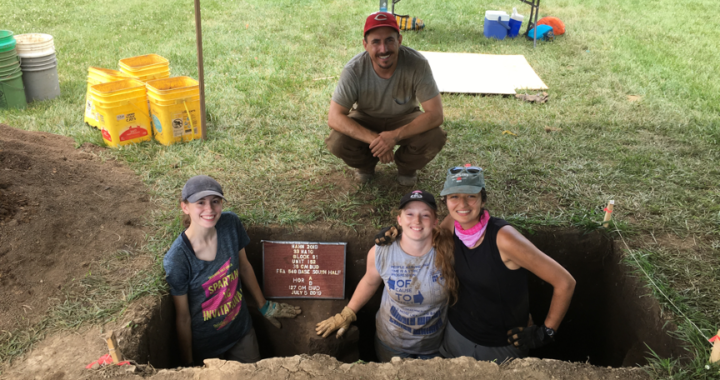At its core, NAGPRA is human rights legislation that was enacted by congress to addresses inequalities between federally recognized descendant communities, the US government, and institutions that control ancestral remains and cultural items affiliated with sovereign Tribal Nations indigenous to the United States. NAGPRA also establishes procedures for inadvertent discoveries on federal and tribal lands and makes it illegal to traffic ancestral remains and cultural items obtained through activities that violate the Act.
[READ MORE]Category Archives: Archaeology
The Cincinnati Arch
How is it that fossils from an ocean that was around nearly half-a-billion years ago can be found in the middle of the North American continent? The answer lies in the formation of the Cincinnati Arch.
[READ MORE]What’s in a Pot? Lessons from Native American Pottery
Because most Native American pottery we discover through excavations or surface collections is broken into small pieces called sherds, people often ask us “what can those pieces tell us?” As it turns out quite a lot!
[READ MORE]Flake-Stone Artifacts
Archaeology is complex, multifaceted and diverse. Items of material culture are no exception as a nearly countless suite of artifacts were manufactured by prehistoric native Americans through the addition, combination and subtraction of raw materials such as stone, clay, bone, shell, wood and plant fibers.
[READ MORE]Mesa Verde National Park
Mesa Verde is a large National Park that includes around 600 cliff dwellings which are rock and adobe structures that are built into an eroded portion of a cliff with incredible indigenous architecture and amazing landscape.
[READ MORE]Cincinnati’s Vanished Yellow Wares
Their yellow colors were bright and cheerful, a sharp contrast to their dull sanitary and kitchenware predecessors – redwares and stonewares. Nineteenth-century American yellow wares, earthenwares with a buff paste and a clear glaze, were both functional and inexpensive. In most cases, they were the product of an assembly line process – a system that attempted to standardize output using relatively cheap raw materials and labor.
[READ MORE]Seeing Beneath the Ground: Remote Sensing at the Hahn Site
You may wonder how Cincinnati Museum Center’s archaeologists decide where to dig when we excavate a site. In part, our decisions are based on which questions we are trying to answer (e.g. what did they eat, how did they cook, what were their houses like, etc.), and on how much we can accomplish within a short amount of time. But, to answer most of these questions, it is helpful to know with some accuracy what lies beneath the surface. For this, we turn to ground-based remote sensing, also known as archaeological geophysics.
[READ MORE]The “Dirty” Dozen
The Hahn site, one of the largest and most intensively occupied Fort Ancient-age sites in the Ohio Valley, was occupied at least intermittently from the 13th through the 17th centuries. Our excavations have uncovered lots in those 12 years. And, even though we still have several more years of processing and analysis ahead of us, let’s take a quick look at what we have accomplished.
[READ MORE]X Marks the Spot: Knowing Where we are in Archaeology Field Work
Do you always know where you are? Well, when we are digging in the field, I can usually tell you to within a centimeter or two. Why is this important? It is because the “control” of space allows us to more adequately reconstruct what is going on at a site.
[READ MORE]What’s in a Pot? Lessons from Native American Pottery
Because most Native American pottery we discover through excavations or surface collections is broken into small pieces called sherds, people often ask us “what can those pieces tell us?” As it turns out, quite a lot!
[READ MORE]










